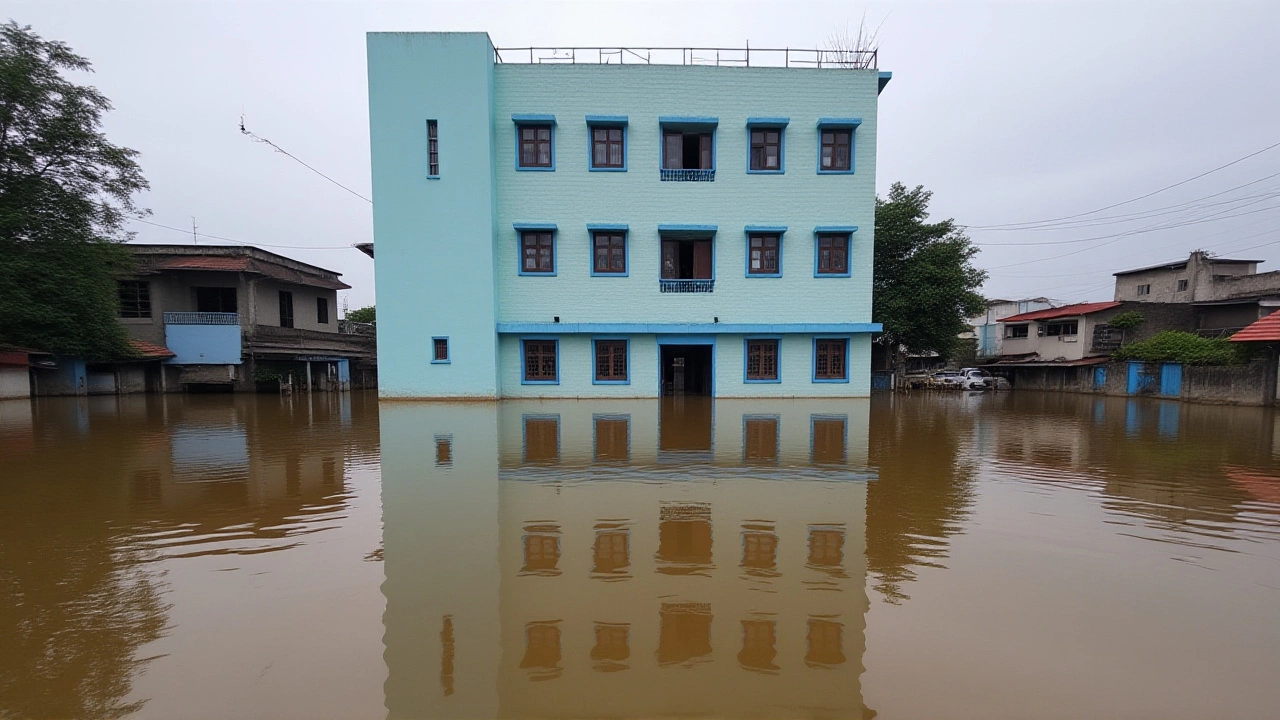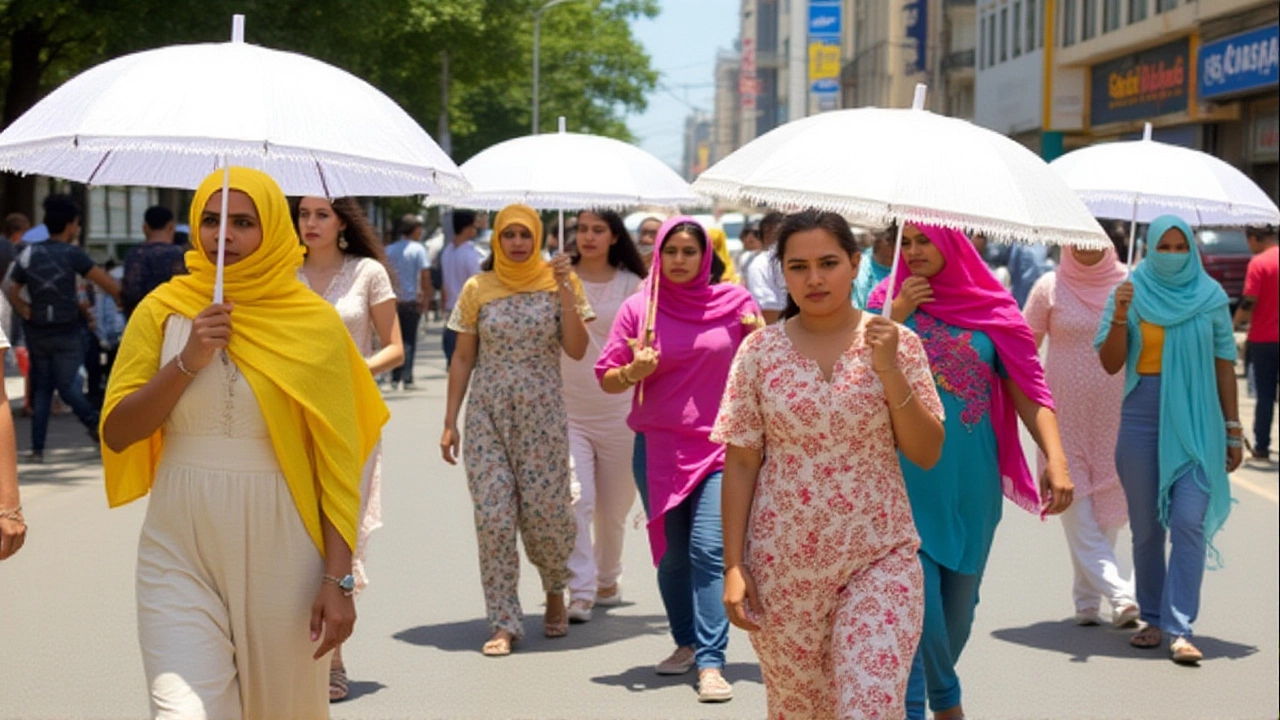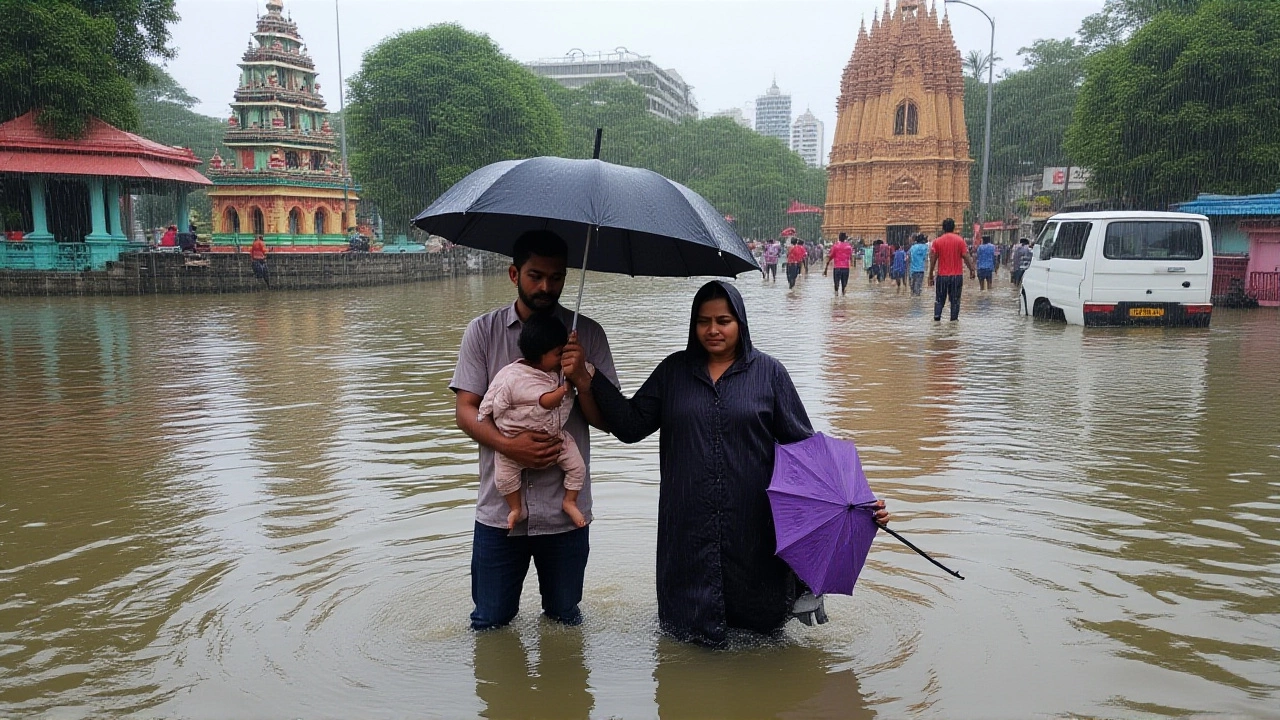Heavy Rain Floods Chennai on Diwali Morning, Airport Runways Submerged
 Oct, 22 2025
Oct, 22 2025
When India Meteorological Department warned of a moderate‑intensity storm on the evening of October 19, 2025, few imagined the heavy rain that would drown Chennai’s streets just as Diwali celebrations kicked off. The downpour, lasting more than 48 hours, turned arterial roads into rivers, swamped the runways at Chennai International Airport, and forced the Southern Railway to suspend three Nilgiri Mountain Railway services on Monday, October 20. Residents waded through knee‑deep water, while officials scrambled to open extra relief centres and urge citizens to stay indoors.
Background: Chennai’s Seasonal Challenges
Chennai, a coastal megacity of over 10 million people, sits on a narrow strip of low‑lying land between the Bay of Bengal and the Eastern Ghats. Its monsoon‑driven climate means that intense thunderstorms are common between September and November, but rapid urbanisation has clogged stormwater channels and left many neighbourhoods vulnerable to flash flooding. The city’s 2015 flood, which claimed over 150 lives, remains a grim reminder of what can happen when drainage systems are overwhelmed.
Experts from the Centre for Climate Studies, Chennai note that the city’s average rainfall during the northeast monsoon has risen by roughly 15 % over the past decade, while the number of days with rainfall exceeding 50 mm has doubled. The recent event fits that troubling trend.
Impact of the Diwali‑Day Downpour
City streets and neighbourhoods
Social‑media footage from early morning showed water gushing across Velachery, Medavakkam, Pallikaranai and Neelankarai along the East Coast Road. Residents reported water levels reaching 0.8 m in front of homes, with some basements completely submerged. Over 40 % of the city’s drainage points were documented as blocked or overflowed, leading to bottlenecks on the Inner Ring Road and the Pallavaram‑Guindy stretch.
Utility crews said more than 3 million cubic metres of water had accumulated in residential basements alone, a volume that would take roughly six hours to pump out under optimal conditions. The Greater Chennai Corporation (GCC) responded by expanding its network of relief centres from 116 to 215, deploying over 1,200 volunteers with sandbags, portable generators and bottled water.
Airport and air travel
At Chennai International Airport, runway 07/25 was water‑logged to a depth of 0.4 m, prompting the airport authority to halt all take‑offs and landings for two hours. More than 30 scheduled flights were either delayed or diverted to nearby airports such as Tiruchirappalli. Airline officials described the situation as "unprecedented for a Diwali morning" and warned that passenger queues at check‑in counters stretched beyond 300 metres.
Airport CEO Arun Kumar (first mention only) told reporters that the wet‑runway sensors automatically triggered a safety shutdown, and that engineers were working round‑the‑clock to pump out water and restore normal operations by late afternoon.
Railway disruptions
In the Nilgiris, heavy rain triggered two landslides between Kallar and Coonoor, knocking down trees and washing away sections of track. The Nilgiri Mountain Railway cancelled Train No. 56136 (Mettupalayam‑Udagamandalam), Train No. 06171 (Mettupalayam‑Udagamandalam) and the return service Train No. 56137 (Udagamandalam‑Mettupalayam). Southern Railway officials estimated that the stoppage would affect roughly 4,500 passengers over the next 48 hours.
Railway spokesperson S. Rajesh (first mention only) said inspections were ongoing and that engineers hoped to clear the debris by early Thursday.

Official Responses and Relief Efforts
Beyond the GCC’s emergency shelters, the Tamil Nadu State Disaster Management Authority (TNDMA) mobilised 15 troops of the Indian Army to assist in sandbagging and evacuation drills. Health officials set up temporary clinics in the newly opened relief centres to treat water‑borne ailments, a precaution after the 2015 flood saw a spike in dengue cases.
Meanwhile, the India Meteorological Department issued a follow‑up advisory at 03:00 IST on October 20, highlighting a low‑pressure area over the southeast Bay of Bengal that was projected to deepen into a depression by October 22. The bulletin warned of continued thunderstorms across coastal districts including Cuddalore, Nagapattinam and Puducherry, and urged the public to avoid non‑essential travel.
What’s Next: Forecasts and Preparations
- October 21‑22: Moderate to heavy rain expected, especially along the coast.
- Potential for additional landslides in the Nilgiris and Eastern Ghats.
- GCC plans to deploy mobile water‑pumps to five critical zones by midnight on October 21.
- Airport authorities aim to resume full operations by late October 23, pending runway clearance.
- Railway engineers anticipate resuming the Nilgiri Mountain Railway by October 24, after track inspections.
Mayor Ms. Priya Venkatesan (first mention only) said the city would review its storm‑water management plan after the event, emphasizing the need for "green infrastructure" such as rain gardens and permeable pavements.

Broader Implications for Urban Planning
The chaos that unfolded on Diwali underscores a larger challenge: balancing rapid urban growth with resilient infrastructure. Climate scientists warn that extreme weather events will become more frequent as sea‑surface temperatures rise. For Chennai, that means re‑thinking drainage designs, investing in early‑warning systems, and perhaps most importantly, integrating community‑based flood monitoring.
Local NGOs like Save Chennai Waters have already launched a citizen‑science app to map water‑logging in real time, a move that could help authorities allocate resources more efficiently during future storms.
Frequently Asked Questions
How does the flooding affect daily commuters in Chennai?
Commuters face stalled buses, blocked arterial roads and delayed trains, forcing many to abandon their vehicles and rely on costly ride‑share services. In the worst‑hit neighbourhoods, travel times have doubled, and some workers missed work entirely, impacting productivity across the metropolitan area.
What measures has the Greater Chennai Corporation taken to assist flood victims?
The GCC increased relief centres from 116 to 215, deployed sandbags, set up emergency medical tents, and distributed bottled water and dry food packets to over 45,000 displaced residents. Teams are also operating pumps 24 hours a day to drain water from low‑lying colonies.
Will the upcoming low‑pressure system worsen the situation?
Meteorologists say the system will likely intensify into a deep depression by October 22, bringing additional thunderstorms to the coastal belt. While the rain may be moderate, saturated soils increase the risk of landslides and urban flash floods, especially in poorly drained zones.
How are airlines handling the runway flooding at the airport?
Airlines have rerouted nearly 30 flights to nearby airports, offered vouchers for affected passengers, and are coordinating with airport engineers to expedite water‑pump operations. Full flight schedules are expected to resume once runway sensors confirm safe landing conditions.
What long‑term solutions are being discussed to prevent future floods?
City planners are evaluating green‑infrastructure projects, such as expanding the city's network of retention ponds, retrofitting stormwater drains, and enforcing stricter zoning laws in flood‑prone areas. The state government is also considering a $2.1 billion fund to upgrade coastal defence structures.